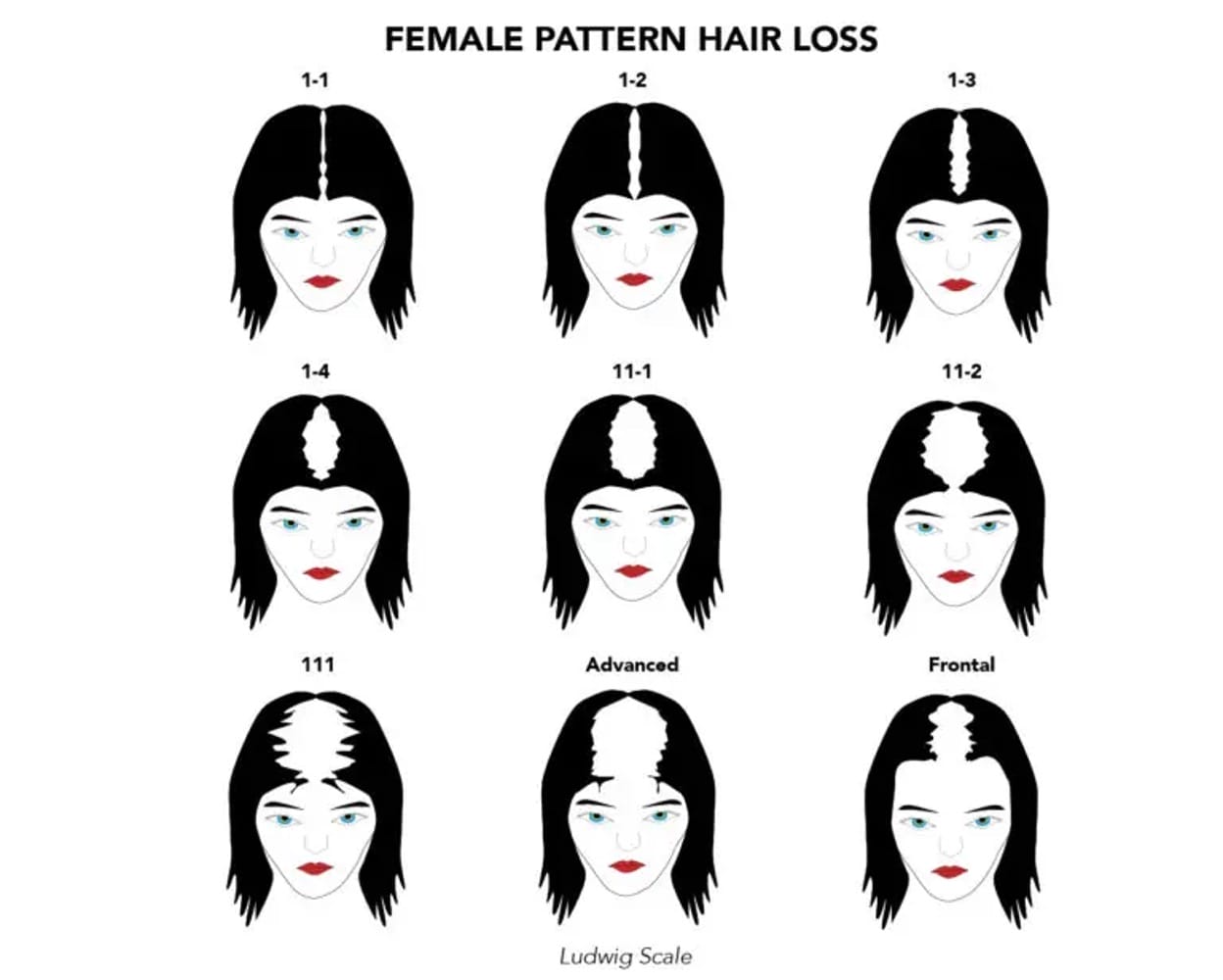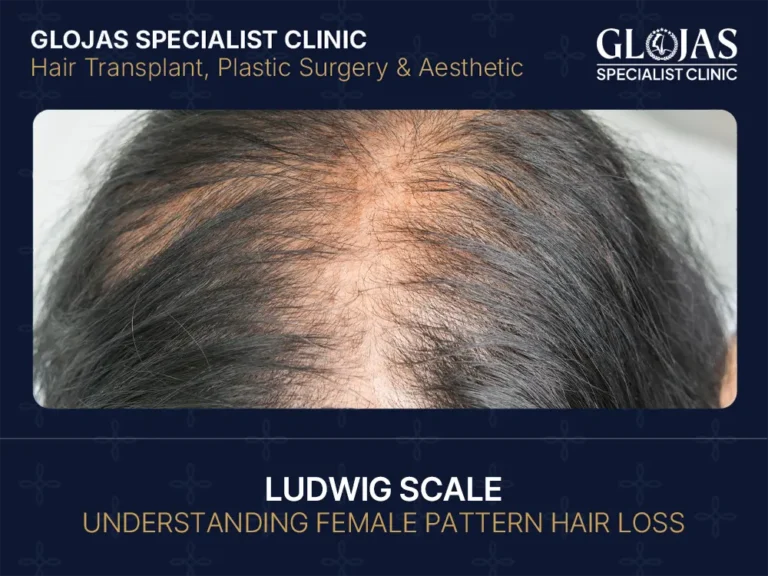The Ludwig Scale is a trusted tool used to classify female pattern hair loss (androgenetic alopecia). It divides hair thinning into three stages, helping clinicians make informed treatment decisions. Understanding the scale gives patients clarity on hair loss progression and guides interventions, from topical therapies like minoxidil to advanced procedural options.
What is the Ludwig Scale?

The Ludwig Scale, developed in the 1970s, is a widely used system for assessing female pattern hair loss (FPHL). Unlike male hair loss scales, which focus on frontal hairline recession, the Ludwig Scale evaluates diffuse thinning across the crown. It provides a clear visual and descriptive framework, making it easier for clinicians to track severity and progression.
GLOJAS Specialist Clinic stands out as a leading authority in hair loss treatment. Using the Ludwig Scale, GLOJAS provides accurate assessments, evidence-based treatments, and personalized care plans. Their approach combines clinical precision with patient-centered support, reflecting their reputation for reliability and expertise in dermatology and trichology.
Key Points
Primarily applies to androgenetic alopecia in women.
Helps track hair loss progression and guide treatment decisions.
Widely referenced in dermatology and trichology research.
Ludwig Scale Stages
Stage I:
Mild thinning at the crown.
Slight widening of the central part.
Hair density largely maintained.
Stage II:
Moderate thinning across the crown.
Central part becomes noticeably wider.
Hair appears finer.
Stage III:
Severe thinning or near-total hair loss at the crown.
Scalp becomes visible.
Complete baldness is rare in women.
Clinical Relevance:
Understanding each stage allows dermatologists to select appropriate treatments, ranging from topical therapies to procedural interventions like platelet-rich plasma (PRP) or hair transplantation.
Diagnosis and Assessment
Clinical Examination:
Visual scalp inspection.
Comparison with baseline photographs.
Additional Tools:
Trichoscopy: Magnified, non-invasive imaging to assess follicle health.
Hair density measurements: Quantitative evaluation of thinning.
Blood tests: Identify contributing factors like iron deficiency, thyroid imbalance, or hormonal issues.
Treatment Options by Ludwig Stage
Stage I-II:
Topical minoxidil (2% or 5%) daily.
Low-level laser therapy (LLLT) to stimulate growth.
Nutritional support: Biotin, iron, and balanced diet if deficiencies exist.
Stage II-III:
Oral anti-androgens: Spironolactone or off-label finasteride.
Procedural therapies: PRP injections, microneedling.
Hair transplantation for severe, stable hair loss.
Lifestyle and Supportive Care:
Gentle hair care routines.
Avoid tight hairstyles or harsh chemical treatments.
Stress management to prevent accelerated thinning.
Frequently Asked Questions (FAQ)
Q: Can the Ludwig Scale predict hair loss progression?
A: It helps assess severity and trends but cannot predict future hair loss exactly, as genetics, hormones, and age all influence progression.
Q: Is the Ludwig Scale used for men?
A: No. Men generally use the Norwood-Hamilton Scale, which focuses on frontal hairline recession and vertex thinning.
Q: Are treatments effective at all stages?
A: Early intervention (Stages I-II) offers the best results. Advanced stages (III) may need procedural or surgical options for meaningful improvement.
Q: Can lifestyle changes reverse hair loss?
A: Lifestyle measures alone rarely reverse hair loss but can slow progression and enhance medical treatments.
Q: How often should hair loss be monitored?
A: Every 3–6 months, using visual checks, photos, or trichoscopy to track progression and response to therapy.
